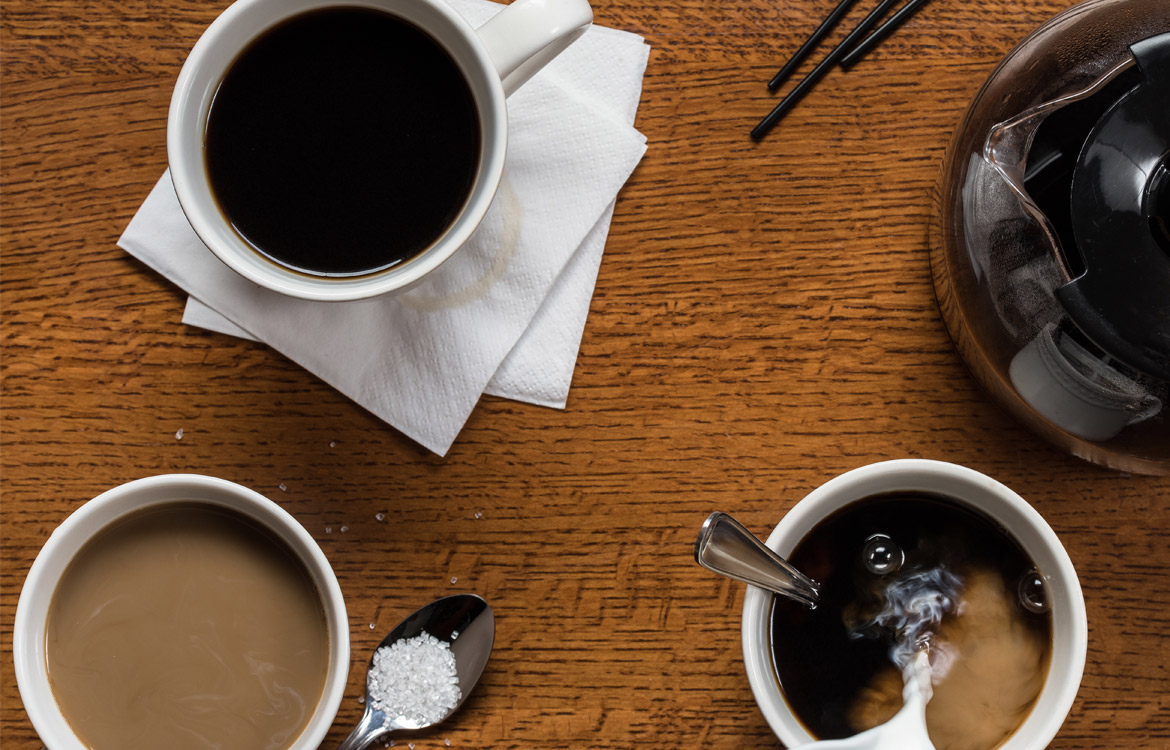
In a recent Chicago Tribune article reporter Nick Kindelsperger and Ipsento Coffee founding partner Tim Taylor visit an undisclosed diner to once and for all determine the objective quality of diner coffee. Using a refractometer, National Coffee Association and Specialty Coffee Association TDS recommendations, and some “[scribbled] down equations,” Kindelsperger and Taylor determine that diner coffee is weak—powerful weak—and terrible. And they couldn’t be any more wrong.
The thing is, they aren’t wrong. By all quantifiable specialty standards, even at their most generous, diner coffee just doesn’t measure up. But I’ll be DAMNED if I let anyone besmirch the good name of diner coffee. Yes, according to specialty coffee rubrics it isn’t as good as specialty coffee, but doesn’t quite seem like a fair test, now does it? According to the Zac scale, none of you jabronies are as Zac as I am, so I must be better, right? No? Sounds like an unfair “test” everyone who isn’t me is doomed to fail at, you say? I never thought of it that way.
And here are some more “facts” for you: diner coffee has brought more people into specialty coffee than any specialty coffee has, maybe all specialty coffee combined. And when I say diner coffee, I mean specifically the stuff that has sat on the heating element for at least two hours, served at 3:00am in an 24-hour greasy spoon where everyone still smokes inside—including the grizzled septuagenarian server with the heart of gold—even though it’s waaaaaay illegal, the sort of place where you leave you smelling like death and with a stomach ache from drinking at least eight cups of coffee. THAT is diner coffee. And if you want to get really real about which is “better,” the number of times diner coffee has met or exceeded my expectations far FAR FAR exceeds that of specialty coffee.
There is a whole generation of coffee professionals—of which I consider myself one, assuming coffee journalism falls under the coffee professional umbrella—for whom drinking diner coffee was “being into coffee.” That was our starting point. It wasn’t Instagrammable eight-tier tulips or being a barista because it was now the “cool” job, or hell, even because your favorite shop home makes their own vanilla syrup for their lattes. It was diner coffee. Burnt, crusty, loaded with more and more cream and sugar as the night progressed to gird the stomach, diner coffee. Mwah. Perfection.
I weep for the next wave of coffee professionals, whose introduction to the whole show are shops that close at 7:00pm. Coffee doesn’t stop when the sun goes down. For many, that’s when it all gets started. Yeah, maybe we all have that a-ha! moment with a natural that really turned us on to specialty coffee, but you know what started that whole journey? It was probably a cup of blueberry flavored coffee at the “fancy” diner, the one with like 20 different options that you could mix and match and everyone had a “favorite,” probably a blend of no less than three different flavors. Half vanilla, quarter Irish cream, quarter cinnamon, and juuuuust a splash of hazelnut for me.
I understand the point of the article. Kindelsprenger and Taylor are trying to show the “coffee is just coffee” crowd that there is, in fact, a difference between pre-ground commodity grade coffee and specialty coffee, and to do so in a quantifiable and scientifically repeatable way. It’s a laudable goal and I don’t begrudge them for it. But once you start calling diner coffee “terrible,” well, now we have a problem. So just remember, if specialty coffee is seeing more devotees than ever before, it’s because it is standing on the shoulders of giants.
You’re not as tall as you think you are.
Zac Cadwalader is the news editor at Sprudge Media Network and a staff writer based in Dallas. Read more Zac Cadwalader on Sprudge.
Image © Adobe Stock
The post In Defense Of Diner Coffee appeared first on Sprudge.

